Ticks and tickborne diseases in the United States
The most common ticks in the United States are:
• Blacklegged tick (Ixodes scapularis): Can carry the germs that cause Lyme disease, anaplasmosis, babesiosis and Powassan virus disease. Blacklegged ticks are widely distributed across the eastern United States.
• American dog tick (Dermacentor variablis): Can carry the germs that cause Rocky Mountain spotted fever (RMSF) and tularemia. American dog ticks are widely distributed east of the Rocky Mountains, also in limited areas on the Pacific coast. Many tickborne diseases, such as Lyme disease, babesiosis, ehrlichiosis and RMSF can be treated effectively if caught early. Be sure to tell your doctor about any history of tick bites or outdoor activities where you might have been exposed to ticks. Many people who become ill do not remember seeing a tick.
• Lone star tick (Amblyomma americanum): Can carry the germs that cause ehrlichiosis, tularemia and the Southern Tick-Associated Rash Illness (STARI). Lone star ticks are widely distributed in the eastern United States, but more common in the South.
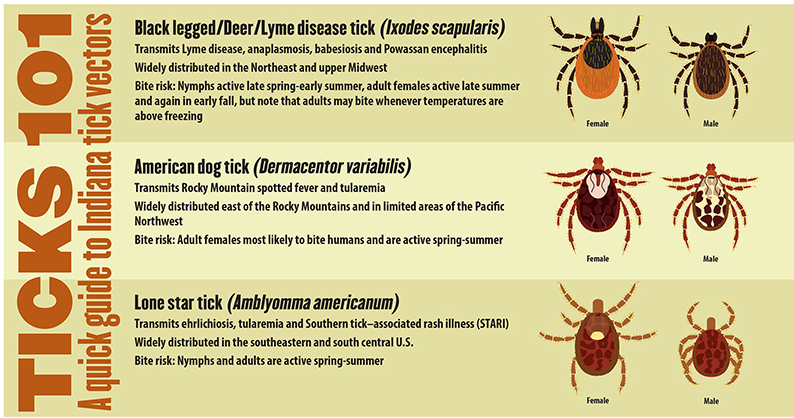
Common Tickborne Diseases in the United States:
Lyme Disease:
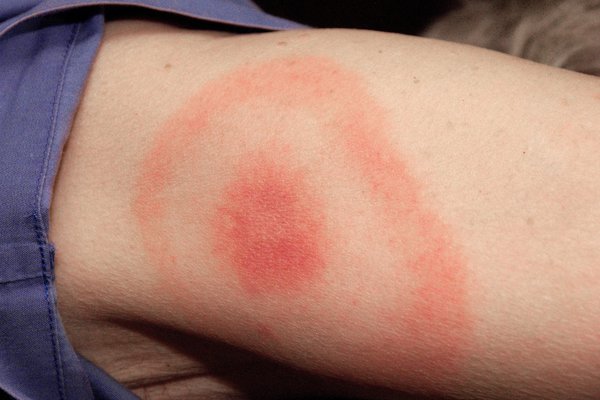
Causative Agent: Borrelia burgdorferi (and Borrelia mayonii in rare cases).
Symptoms: Early signs include a bull's-eye-shaped rash (erythema migrans), fever, chills, headache, fatigue, muscle and joint aches, and swollen lymph nodes. If untreated, it can lead to more severe symptoms like arthritis, neurological disorders, and heart problems.
Geographic Distribution: Primarily in the northeastern, mid-Atlantic, and north-central states.
Rocky Mountain Spotted Fever (RMSF):
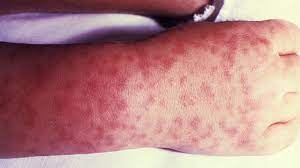
Causative Agent: Rickettsia rickettsii.
Symptoms: Fever, rash (which typically starts on wrists and ankles), headache, nausea, vomiting, muscle pain, lack of appetite. If untreated, RMSF can be fatal.
Geographic Distribution: Widely distributed across the U.S., with higher incidence in the southeastern states.
Anaplasmosis:

Causative Agent: Anaplasma phagocytophilum.
Symptoms: Fever, headache, muscle pain, malaise, chills, nausea, abdominal pain. Severe cases can lead to respiratory failure, bleeding problems, or organ failure.
Geographic Distribution: Primarily in the northeastern and upper midwestern states.
Ehrlichiosis:
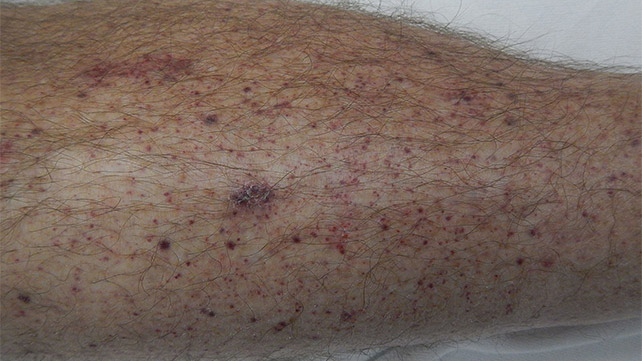
Causative Agent: Ehrlichia chaffeensis and Ehrlichia ewingii.
Symptoms: Fever, chills, severe headache, muscle aches, nausea, vomiting, diarrhea, confusion, and rash (more common in children).
Geographic Distribution: Southeastern and south-central states, extending into the Midwest.
Babesiosis:
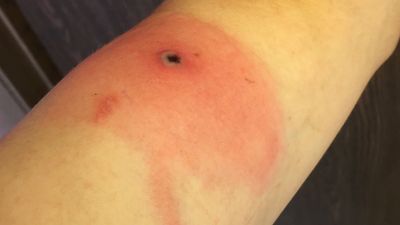
Causative Agent: Babesia microti.
Symptoms: Many people are asymptomatic, but when symptoms occur, they can include fever, chills, sweats, headache, body aches, loss of appetite, nausea, and fatigue. Severe cases can cause hemolytic anemia, jaundice, and organ failure.
Geographic Distribution: Northeastern and upper midwestern states.
Tularemia:
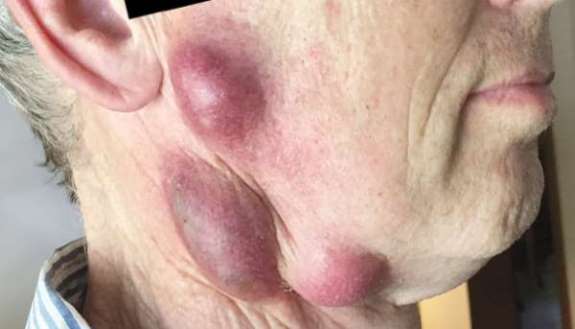
Causative Agent: Francisella tularensis.
Symptoms: Sudden fever, chills, headache, diarrhea, muscle aches, joint pain, dry cough, and progressive weakness. Ulceroglandular tularemia, the most common form, results in a skin ulcer at the site of the tick bite.
Geographic Distribution: Nationwide, but most commonly reported in the south-central United States.
Powassan Virus Disease:
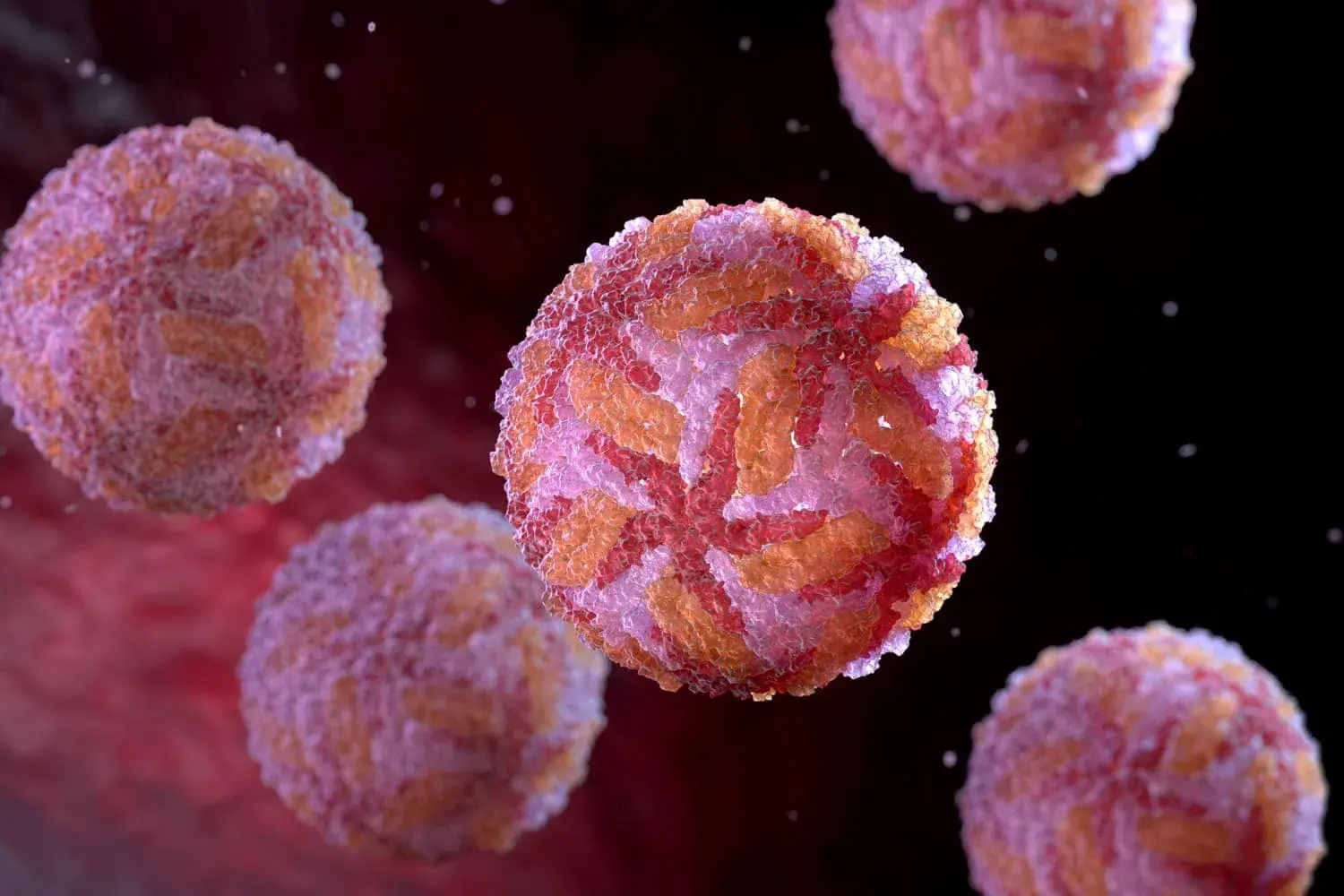
Causative Agent: Powassan virus.
Symptoms: Fever, headache, vomiting, weakness, confusion, seizures, and memory loss. Severe cases can lead to encephalitis or meningitis, with a significant risk of long-term neurological damage or death.
Geographic Distribution: Northeastern and upper midwestern states.
Alpha-Gal Syndrome (Red Meat Allergy):

Cause: Sensitization to alpha-gal (a sugar molecule found in red meat) following a bite from the Lone Star tick.
Symptoms: Allergic reactions after consuming red meat, ranging from mild (hives, itching) to severe (anaphylaxis).








